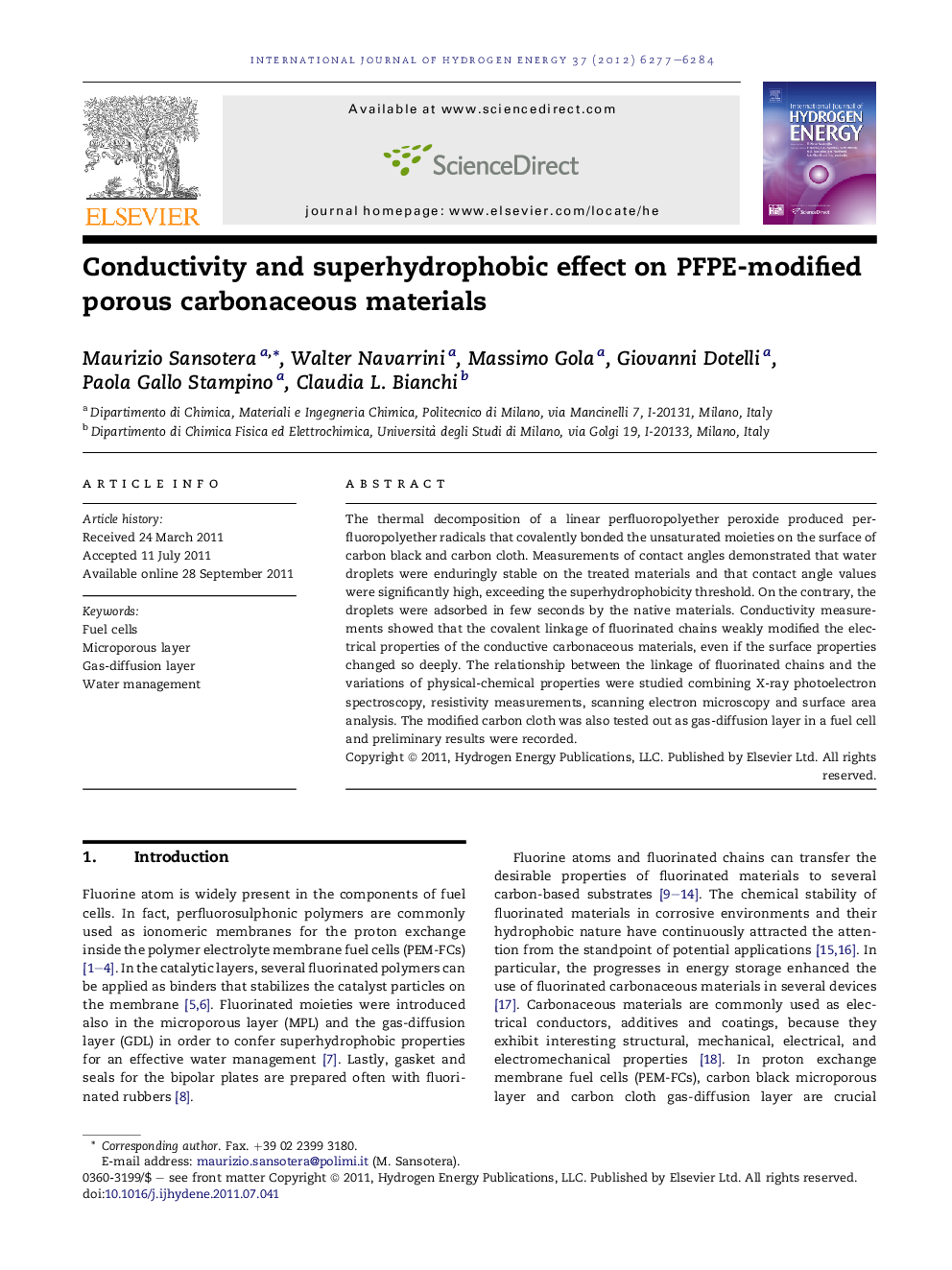| Article ID | Journal | Published Year | Pages | File Type |
|---|---|---|---|---|
| 1276924 | International Journal of Hydrogen Energy | 2012 | 8 Pages |
The thermal decomposition of a linear perfluoropolyether peroxide produced perfluoropolyether radicals that covalently bonded the unsaturated moieties on the surface of carbon black and carbon cloth. Measurements of contact angles demonstrated that water droplets were enduringly stable on the treated materials and that contact angle values were significantly high, exceeding the superhydrophobicity threshold. On the contrary, the droplets were adsorbed in few seconds by the native materials. Conductivity measurements showed that the covalent linkage of fluorinated chains weakly modified the electrical properties of the conductive carbonaceous materials, even if the surface properties changed so deeply. The relationship between the linkage of fluorinated chains and the variations of physical-chemical properties were studied combining X-ray photoelectron spectroscopy, resistivity measurements, scanning electron microscopy and surface area analysis. The modified carbon cloth was also tested out as gas-diffusion layer in a fuel cell and preliminary results were recorded.
► Carbon black and carbon cloth were treated with a linear perfluoropolyether peroxide. ► Perfluoropolyether chains were bonded on the surface of the carbonaceous materials. ► The carbonaceous materials became superhydrophobic after the treatment. ► The conductivity of the carbonaceous materials was weakly modified by the treatment.
